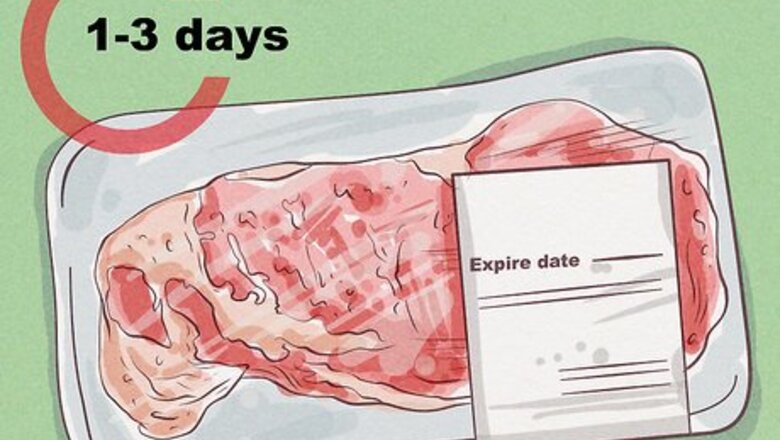
views
Spotting Spoiled Red Meat
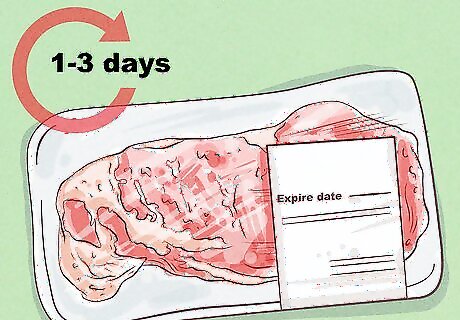
Examine the meat's package for an expiration date. The shelf life for red meat is approximately 1-3 days if it is raw and 7-10 days if it is cooked. Throw away any meat that has passed this expiration date to avoid food poisoning.

Throw out red meat that has been in your fridge for over 5 days. How long your meat will last in the fridge depends on whether it is ground or cut. Ground meat can be left in the fridge for between 1-2 days past its sell-by date. Chopped meats, steaks, and roasts can last between 3-5 days. Meat can last longer if it is frozen. If your meat has been in the fridge for a few days and you have no plans of using it, freeze it to avoid spoilage.

Check the meat for a foul smell. If your meat smells rancid, it most likely is. Spoiled red meat has a distinct, pungent ammonia scent. Throw your meat away if it has a bad odor, especially if the meat's expiration date has passed. Do not press your nose against or near the meat to smell it. Instead, cup your hand near the meat and move the hand towards your face to get a whiff of the meat.

Avoid eating red meat with a greenish hue. Meat that turns green or greenish-brown is usually unsafe for eating, though browning without a greenish hue is not necessarily a sign of rotting. An iridescent sheen is a sign of exposure to heat, light, and/or processing and is not necessarily a sign of spoilage or decreased quality. When in doubt about a meat's color, throw it away.
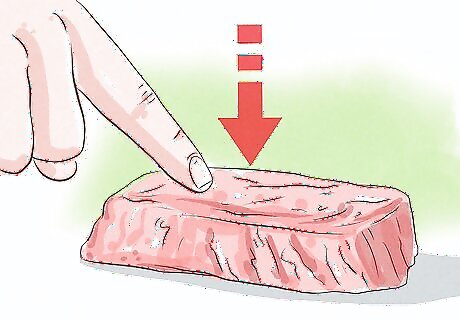
Check the meat's texture. Spoiled red meat is sticky to the touch. If you can feel a slimy coating over the meat, throw it away. This often means that bacteria have started to multiply on the meat.
Checking for Spoiled Poultry

Watch for strong, rancid odors. Fresh poultry should not have any discernible odor. If your poultry has a distinct, unpleasant odor, throw it away and clean out your fridge or freezer. The smell of raw poultry often lingers if the area isn't cleaned thoroughly. Baking soda is an effective cleaner for getting rid of bad smells.
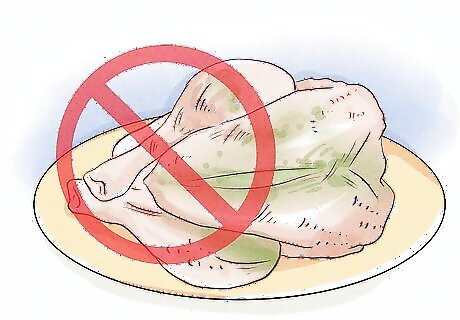
Avoid eating poultry with a grayish color. Fresh raw poultry should be pinkish, and cooked poultry should be white. Poultry that is greyish has probably gone bad. Do not purchase or eat chicken with a dull, discolored appearance. Take the breading or glaze off of cooked poultry served at a restaurant to examine its color.

Feel raw poultry to check its texture. Although raw poultry may have a thin liquid film, it should not have a mucus-like coating. If your poultry feels sticky or excessively slimy, throw it away. Wash your hands after handling raw poultry whether you believe it is spoiled or not.

Look for mold on cooked poultry. In addition to all of the above signs, rotten cooked poultry may start to mold if it has gone bad. Do not attempt to remove the mold or eat the non-moldy parts if you notice this on your cooked poultry. Throw the entirety of the cooked poultry to avoid food poisoning.
Watching for Bad Seafood
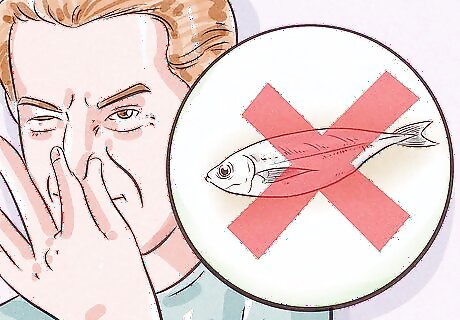
Avoid seafood that smells "fishy." Contrary to common thought, fresh seafood should not smell fishy. It might smell like the sea, but it shouldn't have a strong or pungent smell. Trust your nose: if your seafood smells foul, throw it away. Smell fresh seafood while you are at the supermarket to compare its smell.

Inspect your seafood to examine its freshness. Seafood should have shiny skin as if it has come out of the water. Dry seafood is usually spoiled. If it has eyes and/or gills, its eyes should be clear (not cloudy) and its gills should be reddish, not purple or brown. Avoid fish with scales that look like they're flaking off.
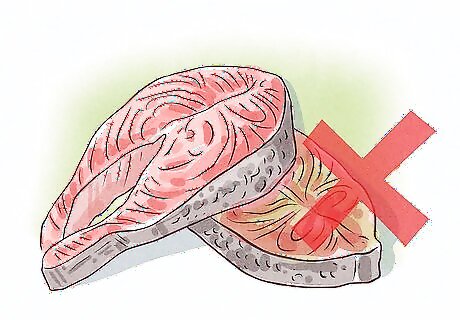
Do not eat fish meat with a milky color. Fresh fish meat is usually white, red, or pinkish in color with a thin liquid film. If the meat is blueish or graying and a thick liquid seeps from it, your fish has likely gone bad.

Check live seafood before you cook it. Seafood that must be eaten alive, like shellfish, often spoils rapidly after they've died. Tap live clams, oysters, and mussels to make sure their shell closes when touched. Watch crabs and lobsters for leg movement before cooking. Do not eat shellfish that has been dead for hours before you cooked it.
Preventing Meat Spoilage

Avoid thawing your meat on the kitchen counter. Meat that is left out of the fridge or freezer for long periods of time is at-risk for spoiling. Leaving your meat out at room temperature for long periods of time increases the risk of spoilage. Instead, thaw meat using the microwave, which is both a quicker and safer method. Thawing frozen meat in the fridge is a safe alternative to the counter.

Store your meat at a safe temperature. Meat should be stored in the refrigerator at a temperature of 40 °F (4 °C). If your meat is stored at any warmer of a temperature, it is more likely to spoil. Throw out food that has been kept for many hours at room temperature.

Freeze your meat if you do not plan to eat it soon. Although meats will only keep for several days in a fridge, it can last for months in the freezer. To extend the shelf life of your meat, place it in a sealed container and freeze it until you plan to eat it. Frozen meats can develop freezer burn which, while not dangerous, often tastes unpleasant.
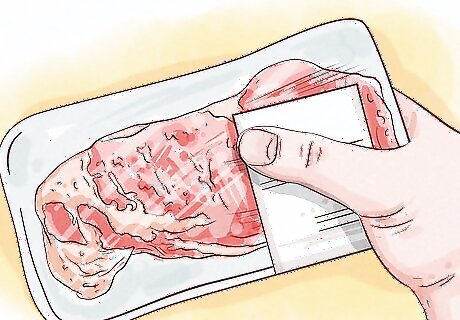
Avoid eating expired or unrefrigerated meat. Even if your meat appears unspoiled, it can still be infected with harmful bacteria. Do not eat meat that has been left out in the kitchen for too long or is well past its sell-by date.
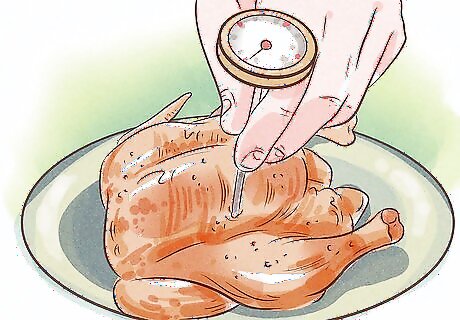
Check the meat's internal temperature while cooking. Because not all foodborne bacteria are detectable, cooking your meat to the right temperature is key for preventing food poisoning. Cooking red meat to between 120–165 °F (49–74 °C) (depending on rareness) is ideal. Poultry should be cooked to 165 °F (74 °C). Seafood is safest when cooked to 145 °F (63 °C). Some seafood, like sushi, is eaten raw. In this case, follow cooking instructions carefully and throw the meat out if you notice signs of spoilage.




















Comments
0 comment